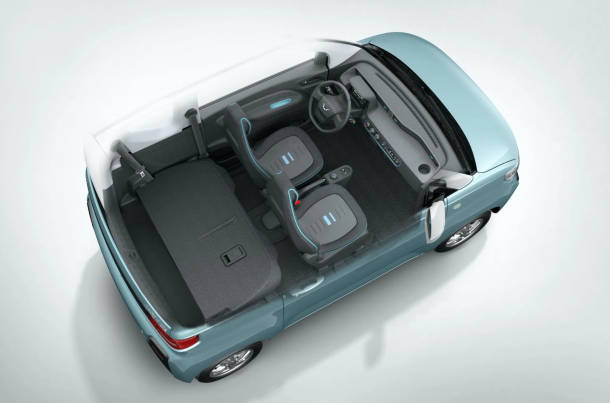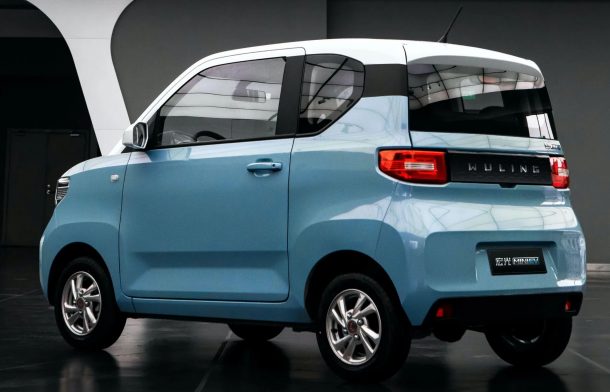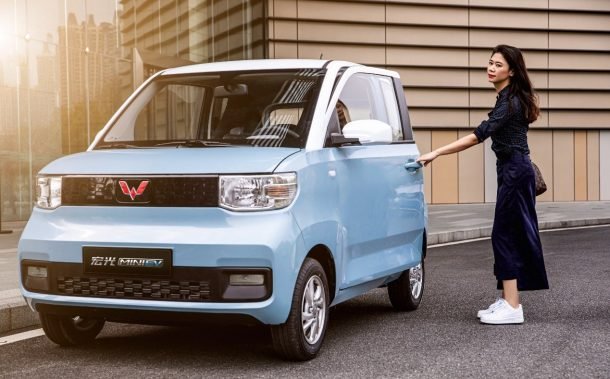While Tesla’s Model 3 sedan is supposedly taking the world by storm, some hot competition has been reported in China. The Hongguang MINI EV has eclipsed the offspring of Elon Musk to become the country’s best-selling electric vehicle. Though at just 28,800 yuan ($4,200), it hardly seems a fair comparison. Tesla’s minimalist sedan is larger and costs roughly 10 times what SAIC Motor, General Motors, and Liuzhou Wuling Motors decided the MINI EV was worth.
That’s right, it took the combined strength of three automakers to birth this baby and we’re wondering what it would take to get you to drive one home if they were offered here.
According to data from the China Passenger Car Association (CPCA), Tesla only shifted around 11,000 Model 3s in August. But SAIC-GM-Wuling sold 15,000 of their two-door electric vehicles during the same period, making it the hottest little automobile on that market — at least so far as battery-driven cars were concerned.

Ludicrously low pricing seems a big help. While we’re fairly certain SAIC-GM-Wuling accounts for Chinese EV subsidies in its advertised price, offering a hatchback that seats four and costs roughly the same as a motorcycle is an achievement even if it happens to be the size of a Kleenex box. Measuring just 2,917 mm (114.8 in.) long, 1,493 mm (58.8 in.) wide, and 1,621 mm (63.8 in.) high, the Hongguang MINI EV is quite petite.
Targeting those trapped in an urban landscape, the MINI EV uses a 27 hp electric motor that’s optimized for efficiency. It pairs with a compact 13.8 kWh battery pack that delivers a claimed 120 miles of range. Basic versions, closer to that $4,200 starting price, don’t have as wide of an operating area and need to be charged somewhere around 75 miles — thanks to their less-advanced 9.2 kWh energy packs.
Assuming August wasn’t a complete fluke, it’s interesting to see a vehicle like this catching on. Chinese auto sales have been in a bad state recently, with electric vehicles taking a particularly severe hit as subsidies were walked back. Heavy discounting in the wake of the coronavirus pandemic has helped bring customers back into the showroom.

Data suggests August sales actually shot up by 8.9 percent against the previous year. But critics have claimed this is the result of the Chinese government pressuring the CPCA to enhance the numbers as a way to reduce the annual shortfall that’s already guaranteed. To be fair, we’ve found the China Association Of Automobile Manufacturers (CAAM) much more adventurous in its counting of cars than the China Passenger Car Association has been.
Shenanigans or no, both groups are predicting a return to strength for the Chinese automotive market and suggesting a sustained period of growth over the next few years.
While it’s certainly not designed for the North American market, what would it take for the Hongguang MINI EV to get inside your garage? Less Chinese involvement? Local manufacturing? A lower price tag? A tad more interior space? A new living situation for you and your ilk? Or would it have to be an entirely different vehicle for you to even entertain the possibility?
[Images: SAIC-GM-Wuling]





